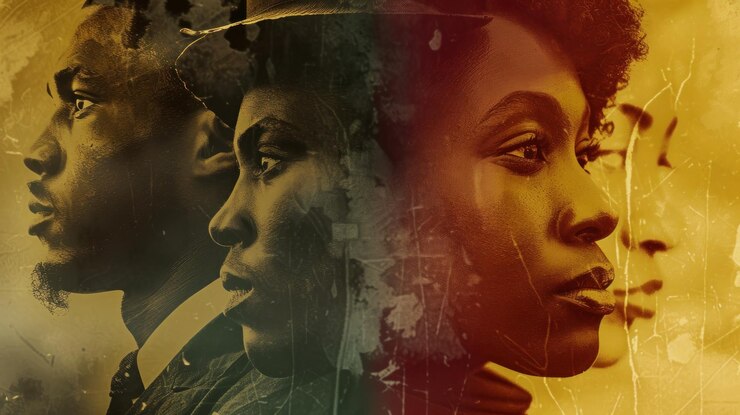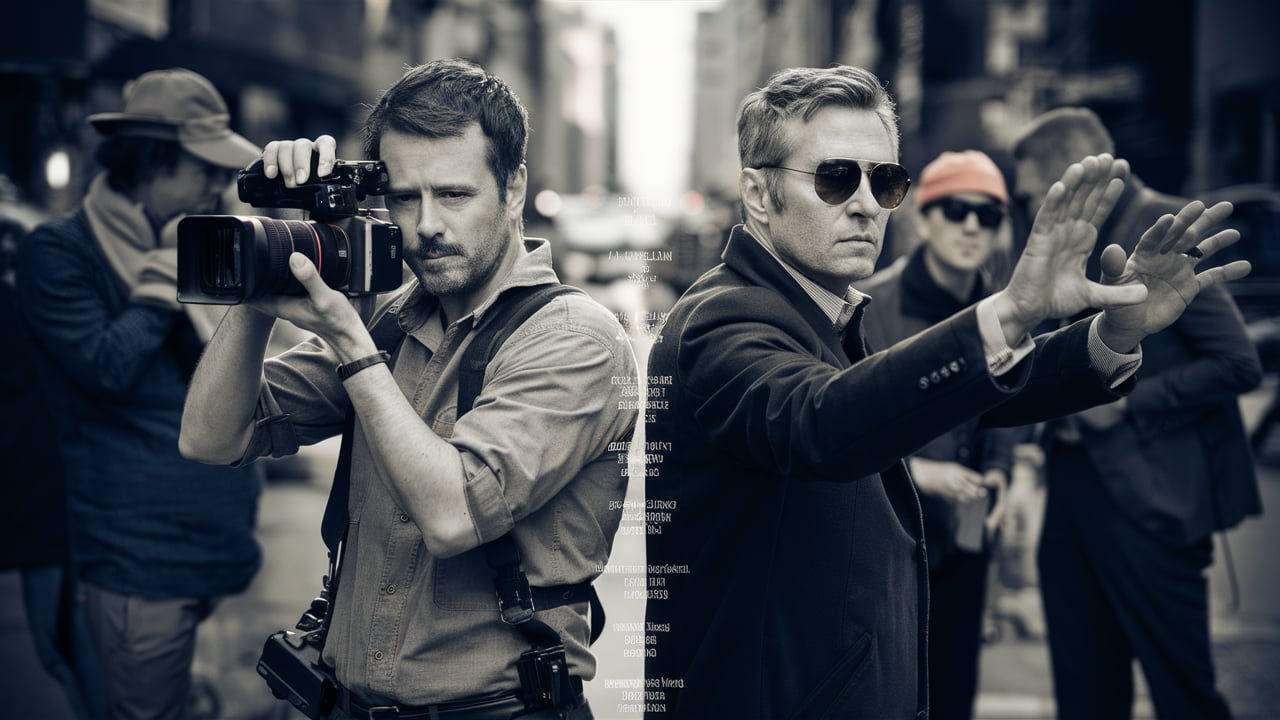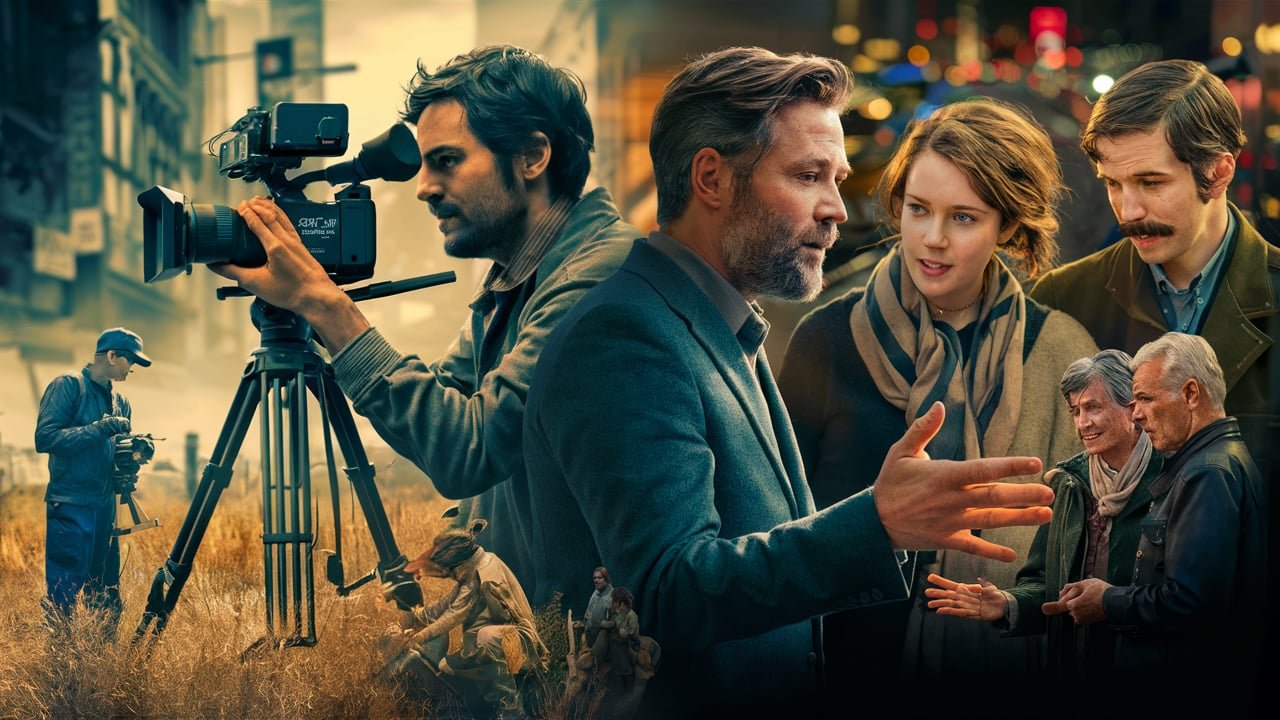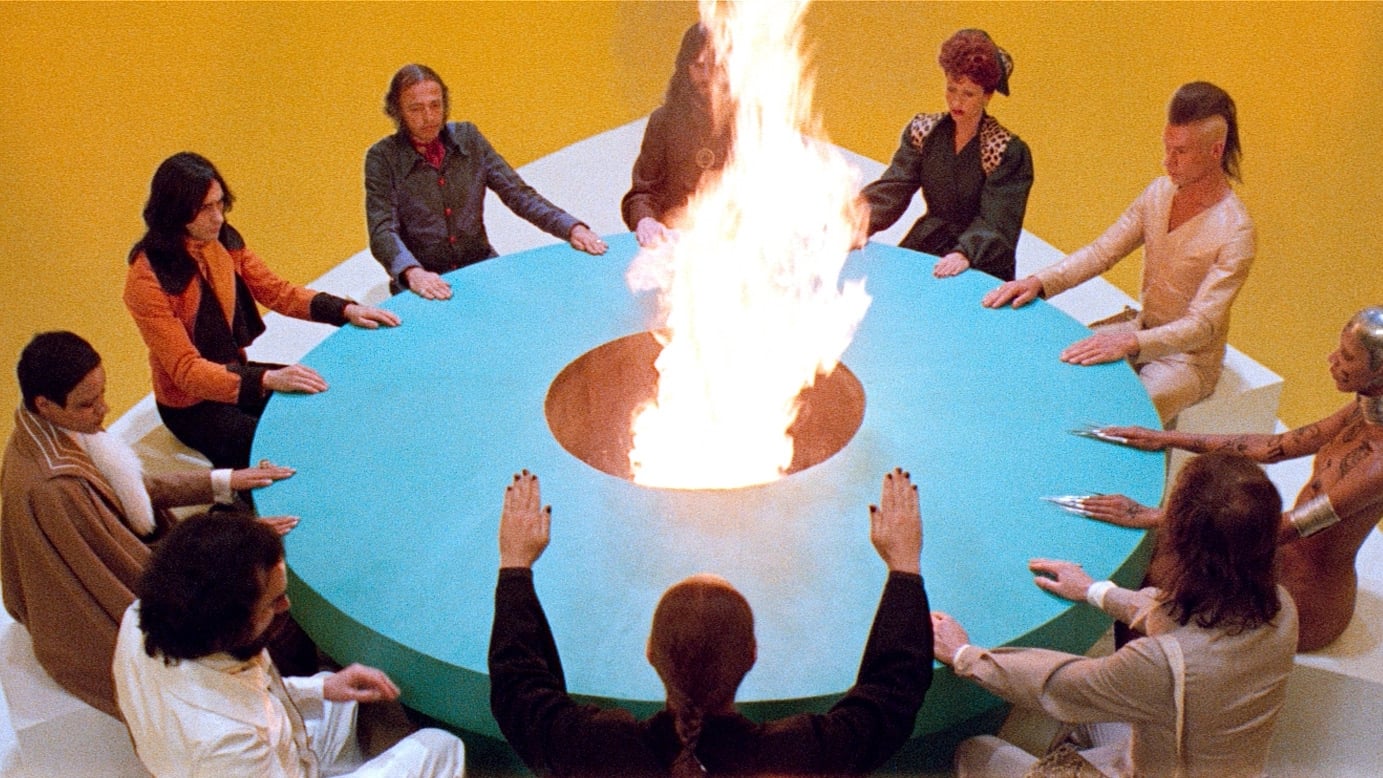Documentary vs. Movie: Key Differences Explained.
Documentaries and movies are two distinct forms of filmmaking that differ in several key aspects. Here are the main differences:
1. Purpose.
- Documentary: Documentaries aim to inform, educate, and present factual information about real-world subjects, events, or issues. They are designed to capture reality and provide a historical record.
- Movie: Movies, on the other hand, are primarily intended to entertain and engage audiences through fictional narratives. They often use creative liberties to craft a compelling story.
2. Reality vs. Fiction.
- Documentary: Documentaries are non-fiction films that capture real-life events, people, and situations. They are based on facts and aim to present an accurate representation of reality.
- Movie: Movies are fiction films that often use creative liberties to craft a story. They can be based on real events or people but are not necessarily factual.
3. Production Methods.
- Documentary: Documentaries typically use real people, locations, and events. They often involve less elaborate production methods and may include interviews, archival footage, and observational footage.
- Movie: Movies use actors, elaborate sets, costumes, and special effects to create a fictional world. They often involve more complex production methods and may include scripted dialogue and dramatic scenes.
4. Cost.
- Documentary: Documentaries are generally less expensive to produce than movies due to their simpler production methods and fewer resources required.
5. Style and Content.
- Documentary: Documentaries often have a more straightforward and factual approach, focusing on presenting information and capturing reality.
- Movie: Movies can have a wide range of styles and content, from action and adventure to romance and drama, and often include elements like music, dance, and comedy.
6. Target Audience.
- Documentary: Documentaries are often targeted towards specific audiences interested in learning about a particular topic or issue.
- Movie: Movies are designed to appeal to a broader audience and are often intended to entertain and engage viewers.
7. Editing and Manipulation.
- Documentary: Documentaries typically aim to present facts objectively without manipulation or editorializing. However, some documentaries may use creative editing techniques to convey a particular perspective or message.
- Movie: Movies often use creative editing and manipulation to craft a compelling narrative and engage audiences.
8. Length.
- Documentary: Documentaries can vary in length but are often shorter than movies, typically ranging from 30 minutes to 2 hours.
- Movie: Movies can also vary in length but are often longer than documentaries, typically ranging from 1 to 3 hours.
These differences highlight the distinct approaches and goals of documentaries and movies, each serving unique purposes in the world of filmmaking.

In the realm of cinema, where shadows dance with light and dreams intertwine with reality, there lies a mysterious tapestry akin to layers of veils waiting to be unveiled. Picture these cinematic realities as intricate lacework spun by master storytellers, each thread weaving narratives that beckon us into unseen worlds.
As we stand at the threshold of this enchanting landscape, poised on the cusp of revelation, let us journey together through the uncharted territories of film genres.
Come, dear reader, join me as we traverse the labyrinthine paths of documentaries and movies, each a distinct universe pulsating with its unique essence. In this enigmatic expedition, we shall unravel the hidden truths veiled within documentary realism and delve into the spellbinding realms of fantastical narratives that elicit our deepest emotions.
Our voyage embarks not merely on a quest for knowledge but a soul-stirring exploration of the human experience through the lens of cinema.
Embrace the unknown with open minds and hearts as we navigate these shifting sands of film realities. Let curiosity be our guiding star through this odyssey where boundaries blur, truths meld with fables, and where the very essence of storytelling takes flight beyond mere words on screens.
Together, we shall pierce through these cinematic veils and unearth the treasures that await in this wondrous expanse—a world brimming with secrets yet to be disclosed. Step forth; let us embark on an enigmatic journey into the vast tapestry of filmic wonders awaiting our discovery.
Embarking on the exploration of documentary versus movie.
Embarking on the exploration of documentary versus movie realities is akin to navigating two distinct yet intertwined universes within the cinematic realm. Documentaries, the meticulous chroniclers of reality, venture into unearthing truths with a raw and candid approach.
Through the lens of documentaries, viewers are transported into genuine experiences where authenticity reigns supreme. In contrast, movies emerge as enigmatic storytellers enchanting audiences with vividly imaginative narratives that blur the lines between reality and fiction.
While documentaries strive to illuminate the world as it is, movies offer a kaleidoscopic journey through realms both real and fantastical.
The purpose behind creating documentaries resonates with an earnest desire to capture truths in their purest form—a candid portrayal untouched by embellishments or dramatizations. By delving deep into pressing societal issues or historical events, documentaries serve as mirrors reflecting our world back to us in all its complexities and nuances.
Take for instance “Won’t You Be My Neighbor?” – a heartwarming documentary exploring the life and legacy of Fred Rogers, revealing his unwavering commitment to kindness amidst a turbulent world.
On the other end of the spectrum, movies like “Inception” transport audiences into labyrinthine dreamscapes where realities overlap and dreams intertwine, inviting viewers to question the nature of existence itself.
As we unravel these layers further, we encounter how documentaries act as vessels traversing through histories untold and voices unheard. Films like “13th” shed light on systemic injustices ingrained in society while opening crucial dialogues around race and mass incarceration.
Conversely, movies such as “Pan’s Labyrinth” delve into mesmerizing fairy tale worlds where mythical creatures coexist alongside human characters in a tapestry woven with threads of magic and darkness.
Each genre possesses its unique allure: documentaries provoke introspection while movies ignite imagination; together, they weave a rich tapestry that defines the diverse landscape of cinema’s storytelling.
Imagination Dances with Reality.
As the celluloid curtain rises, revealing a world where imagination dances with reality, the artistry of crafting cinematic realities takes center stage. Filmmakers are akin to master painters, skillfully blending symbolism, metaphors, and aesthetics to weave tapestries that not only captivate but also evoke deep emotions within audiences.
In this realm where truth and fiction coalesce, each genre unfurls its distinct essence through the meticulous strokes of visual storytelling.
In documentaries, every frame is a canvas.
In documentaries, every frame is a canvas portraying raw truths and unembellished realities. Here, filmmakers harness the power of raw authenticity to create compelling narratives that resonate with viewers on a visceral level.
Through techniques like direct cinema or cinéma vérité, they strip away the veils of embellishment to expose the bare bones of truth. On the other hand, traditional narrative filmmaking stands as an enchanting labyrinth of illusions where directors orchestrate scenes like symphonies of light and shadow.
The mise-en-scène becomes a playground of creativity where every prop and setting whispers secrets to attentive eyes.
Delving deeper, one uncovers how visual storytelling techniques serve as the cornerstone in building immersive worlds within cinematic realities. Documentaries often rely on candid interviews or observational footage to convey authentic human experiences vividly.
Conversely, narrative films employ lighting, framing, and editing to sculpt fantastical realms that transport audiences beyond mundane existence.
Whether it’s the gritty realism captured in a documentary’s handheld camera shots or the dreamlike sequences woven into a narrative film’s fabric – each has its own palette of tools used by filmmakers to craft unforgettable experiences for viewers across genres.
It is within these nuances that the true magic of cinema lies – where a simple glance can speak volumes or a carefully curated color palette can set hearts astir.
The artistry in crafting cinematic realities transcends mere entertainment; it is a profound examination of humanity wrapped in visually enticing packages ready to be unwrapped by eager eyes seeking both escape and enlightenment.
Blurring the Lines Between Fact and Fiction.
In the tapestry of modern cinema, genre boundaries are no longer rigid lines but intricate webs that interlace reality with fiction, blurring distinctions to create a mesmerizing blend. Filmmakers now venture into uncharted territories where truth mingles with imagination, bending narratives in ways that challenge audience perceptions.
These cinematic storytellers act as alchemists, weaving threads of authenticity into fictional tapestries or transforming real-life events into vivid cinematic tales that leave viewers pondering the elusive nature of truth.
Enter the realm of films like “Adaptation,” where the boundary between fiction and reality is deliberately distorted. Directed by Spike Jonze and written by Charlie Kaufman, this meta-commentary on film adaptation dives deep into the complexities of storytelling.
Through its narrative intricacies, it provokes audiences to question where reality ends and fiction begins, showcasing how filmmakers can deftly manipulate perceptions through their craft. Such examples not only entertain but also serve as intellectual puzzles challenging viewers to discern between what is fabricated and what is a slice of truth.
Audiences find themselves on a thrilling tightrope walk when confronted with works like “Exit Through the Gift Shop” by renowned street artist Banksy. This documentary blurs traditional genre distinctions by keeping viewers guessing about its authenticity.
Is it a genuine portrayal of an eccentric artist’s rise to fame or an elaborate hoax constructed to question the very nature of art and celebrity? Such enigmatic creations push boundaries, compelling audiences to confront their beliefs about reality while marveling at the transformative power of storytelling in modern cinema.
Experiencing Immersion Through Cinematic Realities.
Embarking on a cinematic journey is not merely about watching; it’s about stepping into a realm where reality and imagination intertwine. Audience immersion in film realities transcends passive observation, drawing viewers into the very heart of narratives.
Imagine being enveloped by the hues of a sunset painting the sky in an emotionally-charged scene or feeling the chill of suspense seep through your skin as the soundtrack intensifies—a true testament to the power of sensory engagement in cinema. In these moments, you are no longer an outsider looking in but an active participant in the world created on screen.
The fusion of visuals, soundscapes, and narratives in cinema acts as a gateway to transporting audiences across dimensions. Think back to instances where you found yourself lost in the authenticity of a documentary or swept away by the whimsical magic of a fantasy film.

Whether witnessing real-life struggles unfold before your eyes or escaping to fantastical realms beyond imagination, these experiences resonate deeply because they invite you to form connections with characters and stories on a visceral level. Each frame becomes a brushstroke painting vivid emotions, each note a melody that lingers long after the credits roll.
Anecdotes from cinema history abound with tales of audience members shedding tears during poignant documentaries or gripping their seats during thrilling blockbusters. Remember when a captivating story captured your heart so completely that you laughed, cried, and held your breath alongside the characters?
These are testaments to the immersive power of cinematic realities—a testament to how films have this remarkable ability to make us not just see or hear but feel and experience worlds both real and imagined.
Through poignant anecdotes and compelling case studies, audiences can reflect on their own transformative encounters within cinematic landscapes—moments where veils were lifted, revealing truths that resonated long after leaving the theater.
From Vision to Screen: Filmmakers’ Perspectives.
Embarking on the transformative journey from a flicker of an idea to a cinematic masterpiece is a sacred pilgrimage for filmmakers. These visionaries, akin to alchemists of storytelling, blend imagination with technical prowess to manifest worlds that reverberate with audiences far and wide.
Renowned directors often speak of this process as a delicate dance between artistry and technique, where every frame is infused with their singular vision. Take Guillermo del Toro, whose enchanting creations seamlessly fuse fantasy and reality in films like “Pan’s Labyrinth,” inviting viewers into intricate realms born from his boundless imagination.
In revealing their perspectives, filmmakers often provide glimpses into the inner workings of their creative minds. Quotes from legendary directors like Martin Scorsese shed light on the intentions behind their narrative choices – whether rooted in personal experiences or historical events that resonate deeply within societal narratives.

Scorsese’s passion for exploring themes of guilt and redemption is evident in works like “Taxi Driver” and “Raging Bull,” where characters grapple with moral ambiguity against gritty urban backdrops. Such insights unveil the intimate connections between filmmakers’ personal philosophies and the stories they bring to life on screen.
Despite the allure of the silver screen, filmmakers face a myriad of challenges along their artistic odyssey. The quest for authenticity in capturing human truths in documentaries can become an arduous task, where ethical considerations intertwine with storytelling objectives.
On the flip side, crafting compelling fictional worlds demands meticulous attention to detail in weaving cohesive narratives that suspend disbelief. Yet, amidst these challenges lie moments of profound reward, where filmmakers witness audiences resonating with their stories on deep emotional levels or engaging in dialogues sparked by their visual tapestries.
It is within this dichotomy of struggle and triumph that filmmakers find meaning in translating their visions into cinematic realities that endure beyond fleeting moments on screen.
Navigating the Cinematic Tapestry: Embracing the Depths of Film Realities.
As we reach the crux of our journey through the enigmatic realms of film realities, it becomes increasingly clear that the veils we sought to unveil are not merely superficial distinctions but intricate threads woven into a vast cinematic tapestry.
It is here, beyond the surface perceptions of genres, where aspiring filmmakers, cinephiles, and curious minds alike are beckoned to venture deeper.
The power of storytelling transcends boundaries, beckoning us to explore the multifaceted landscapes that cinema offers – from the raw authenticity of documentaries to the enchanting realms of fictional narratives.
In this rich tapestry of film realities, each thread holds a unique story waiting to be discovered and understood. As we part ways with this immersive exploration, let us carry forth a newfound appreciation for the artistry and depth found within these cinematic worlds.
Let us embrace the challenge of navigating beyond mere veils, daring to uncover the hidden truths and fantastical narratives that shape our perceptions and stir our emotions.
For in this journey lies not just entertainment but a profound understanding of the human experience rendered through light and shadow on the silver screen. So go forth, dear reader, and continue your odyssey through film realities – there are wonders aplenty waiting to be revealed.
How do documentaries and narrative films differ in their storytelling techniques?
Documentaries and narrative films (or feature films) have distinct approaches to storytelling:
Documentaries:
- Documentaries focus on presenting real-life events, people, and situations in an informative and objective manner.
- The storytelling in documentaries is often driven by the subject matter and the filmmaker’s perspective on it, rather than a pre-determined narrative structure.
- Documentaries may use techniques like interviews, archival footage, and observational filming to capture and convey the reality of the subject.
- The storytelling in documentaries is typically more linear and chronological, aiming to provide a factual account of events.
Narrative Films:
- Narrative films tell fictional stories, often with a clear beginning, middle, and end.
- The storytelling in narrative films is driven by a scripted plot, character development, and dramatic elements.
- Filmmakers in narrative films have more creative freedom to manipulate the story, timeline, and visual style to engage the audience.
- Narrative films often use techniques like dramatic scenes, dialogue, music, and visual effects to create an immersive, emotional, and entertaining experience for the audience.
What are the main purposes of documentaries compared to feature films?
The primary purposes of documentaries and feature films differ:
Documentaries:
- Documentaries aim to inform, educate, and raise awareness about real-world issues, events, or subjects.
- They seek to present factual information and provide a historical record or perspective on a particular topic.
- Documentaries may also aim to inspire social or political change by highlighting important issues or stories.
Feature Films:
- Feature films are primarily intended to entertain and engage the audience through fictional narratives.
- They may also aim to explore themes, emotions, or social issues, but often do so through the lens of a creative, fictional story.
- Feature films are designed to captivate the audience and elicit emotional responses, rather than solely inform or educate.
How do the production costs of documentaries compare to those of commercial movies?
The production costs of documentaries are generally lower compared to commercial movies:
Documentaries:
- Documentaries typically have lower budgets, as they often use simpler production methods and fewer resources.
- They may rely more on interviews, archival footage, and observational filming, which are generally less expensive than elaborate sets, costumes, and special effects.
- Documentaries also tend to have smaller crews and fewer post-production requirements, further reducing the overall production costs.
Commercial Movies:
- Commercial movies, or feature films, often have much higher production budgets, sometimes reaching hundreds of millions of dollars.
- They require extensive resources for sets, costumes, visual effects, and large casts of professional actors.
- The post-production process for commercial movies, including editing, visual effects, and sound design, can also be very costly.
- Additionally, the marketing and distribution of commercial movies can add significantly to the overall production and release costs.
The lower production costs of documentaries allow filmmakers to tackle a wider range of subjects and stories, often with more limited resources, compared to the high-budget, large-scale productions of commercial movies.

I am a highly experienced film and media person who has a great deal to offer to like-minded individuals. Currently working on several exciting projects, I am a film and media practitioner for over a decade. I have achieved a great deal of success in my professional career.





